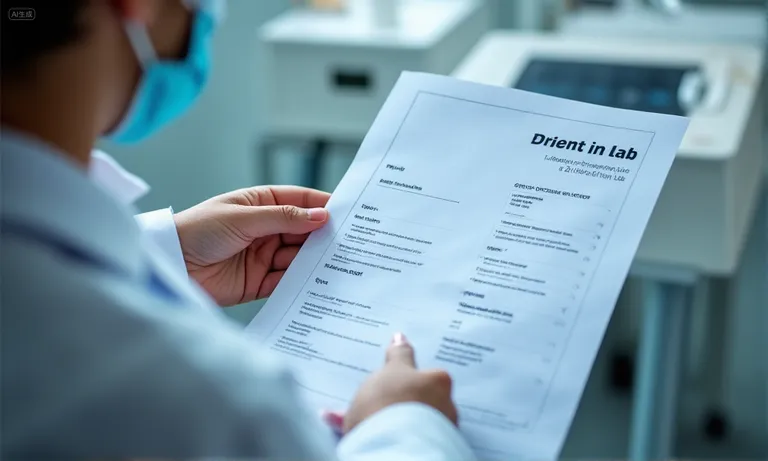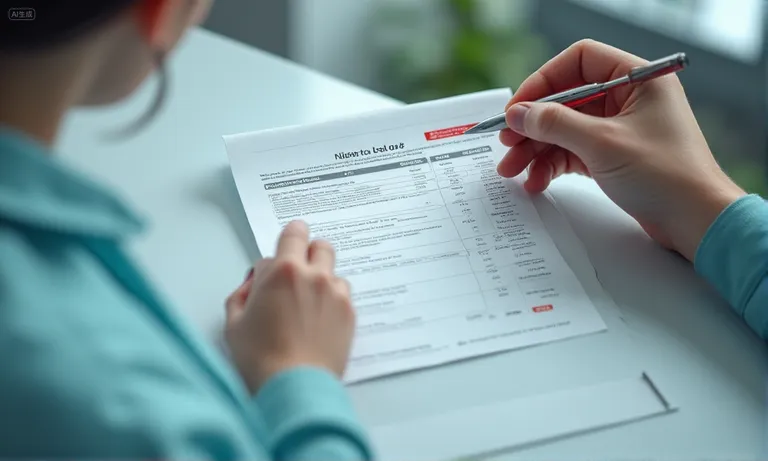A transparent and structured cost model in dental implant outsourcing balances competitive pricing with predictable quality, while protecting buyers from the hidden risks often embedded in low-cost offers. Procurement teams evaluating outsourcing partners should prioritize models that combine financial clarity with consistent performance rather than headline discounts.
- Predictability: fixed-fee pricing per restoration type to avoid cost surprises
- Quality safeguards: certified materials, digital scans, and fit verification
- Transparent communication: dedicated channels to prevent delays and errors
- Case documentation: traceable records for accountability and compliance
- Risk indicators: unusually low pricing, vague quotes, or offshore-only dependence
By applying these benchmarks, buyers can separate short-term savings from true long-term value. A cost structure built on transparency and quality reduces hidden risks, strengthens supplier trust, and ensures consistent outcomes in implant restorations—helping clinics and procurement teams secure sustainable growth with the right overseas dental lab partner.
Why cost structure matters in dental implant outsourcing
Cost structure is the foundation of trust in outsourcing dental implant cases. A transparent model not only reveals where the money goes but also signals how the lab manages quality, turnaround, and long-term collaboration. Buyers who understand cost dynamics are better equipped to filter unreliable partners and avoid expensive downstream risks.

Image
ALT: dental-lab-cost-structure-analysis
Prompt: A highly realistic, ultra-detailed, professional-quality photo captured in a clean, well-lit environment. Materials must be photorealistic, and rendered with DSLR-level clarity. Lighting should be soft daylight or studio white light, avoiding cold or bluish clinical tones. A procurement manager reviewing detailed dental lab cost breakdown documents on a desk, with charts and itemized reports visible, creating a sense of financial analysis and transparency.
How pricing models influence procurement decisions
Different pricing structures—such as per-unit charges, bundled service fees, or fixed monthly retainers—can drastically change how procurement managers compare labs. A unit-based model often suits small clinics that order sporadically, while fixed fees help DSOs forecast budgets more accurately. The choice of model impacts not only financial predictability but also how both sides prioritize efficiency and accountability. In practice, using clear line-item pricing and a defined scope/SLA reduces billing disputes and keeps collaboration smooth; pairing this with a documented lab–clinic communication checklist further lowers remake risk and delays. See overhead & lab-fee budgeting guidance for practical templates.
Why chasing the “lowest price” leads to higher long-term costs
Focusing only on initial lab quotes often ignores the hidden impact of remakes, reworks, and delays. A veneer case priced at 20% less may end up costing more if two remakes are needed, each delaying patient delivery and consuming chair time. Over time, procurement managers realize that a slightly higher upfront cost with robust QA is cheaper than constant corrections. We have seen overseas buyers reconsider partnerships after calculating that hidden remake expenses outweighed their early savings.
How transparent costs build supplier trust
Labs that present line-item breakdowns—covering materials, labor, technology, logistics, and compliance—signal professionalism and confidence in their process. When buyers see clarity, they gain confidence that no last-minute surcharges or vague “handling fees” will appear. Transparency also creates a shared language: both sides can quickly identify which element drives cost increases and agree on solutions. In practice, this openness accelerates decision-making and sets the foundation for durable, trust-based relationships with global partners.
Clear cost structures are more than financial spreadsheets—they are decision tools that reduce risk, enable accurate forecasting, and foster sustainable partnerships. For procurement teams outsourcing to an overseas dental lab, cost clarity is often the first sign that a supplier is both capable and trustworthy.
What makes up a standard dental implant lab cost structure
A standard dental implant lab cost structure typically combines materials, skilled labor, technology investment, logistics, and regulatory compliance. Understanding these categories helps procurement teams compare suppliers on equal footing and anticipate the true costs of long-term collaboration.

dental-implant-lab-cost-breakdown
Material costs: titanium, zirconia, and alloys
Material choice directly shapes both upfront costs and long-term reliability.
- Titanium is widely used for implants due to strength and biocompatibility, but prices fluctuate with global supply.
- Zirconia offers esthetic benefits for abutments and crowns, yet requires precision milling, adding to overall expenses. See zirconia in dentistry overview for clinical data on cost and durability.
- Alloys like cobalt-chromium are often cheaper but may create compatibility concerns if standards vary.
Procurement teams should confirm whether suppliers use certified sources, as uncertified alloys are a common cause of quality disputes.
Labor and technical expertise: design, milling, QA checks
Skilled labor underpins accuracy in implant restorations. CAD designers define margins and emergence profiles, milling technicians ensure precision fitting, and quality assurance staff run fit checks and shade verifications. Labor-intensive steps often account for 30–40% of total lab costs. Variability comes from whether the lab employs trained staff in-house or outsources key steps to third parties, which can dilute accountability.
Technology investment: CAD/CAM and digital workflows
Dental implant labs that invest in modern CAD/CAM systems, 5-axis milling machines, and 3D printing infrastructure may have higher base costs. However, these investments reduce remake rates and turnaround times, providing better overall value. Clinics working with labs that maintain updated software licenses and digital workflow platforms can also achieve faster communication and smoother integration with their own systems.
Logistics and shipping: couriers, customs, handling fees
Shipping and handling are often underestimated in cost breakdowns.
- Couriers and express shipping add premiums for urgent cases.
- Customs duties and import taxes can vary significantly by region.
- Handling fees at airports or local hubs may appear as hidden surcharges.
Overseas buyers should confirm whether shipping is billed at actual courier rates or inflated with markups. Some global dental labs negotiate bulk shipping rates to lower client costs.
Compliance and certification costs: ISO, FDA, CE
Compliance expenses reflect the lab’s commitment to international standards.
| Certification | What it Covers | Cost Implication |
|---|---|---|
| ISO 13485 | Medical device quality management | Ongoing audits, staff training |
| FDA Registration | Access to U.S. market | Filing fees, inspection readiness |
| CE Marking | EU regulatory compliance | Documentation, notified body reviews |
Labs that consistently maintain these certifications demonstrate greater reliability, though they pass part of the compliance cost into their pricing. Reference ISO 13485 quality management for medical devices for international compliance expectations.
A full dental lab cost structure is not just a financial sheet; it is a blueprint that shows how a lab balances material quality, skilled work, technology, logistics, and compliance. Buyers who examine these elements closely can avoid vague offers and instead benchmark suppliers on comparable, transparent terms.
What elements show real value in dental lab cost structures
True value in dental outsourcing is not about the lowest number on a quote but about cost predictability, certified quality, and efficient collaboration. Buyers should focus on pricing models, materials, communication, documentation, and digital integration that collectively lower risks and enhance trust.

dental-lab-value-elements
Fixed-fee pricing models for predictable costs
Predictable pricing builds financial stability into outsourcing relationships. Fixed-fee or bundled arrangements allow procurement managers to set budgets with confidence and avoid disputes over minor adjustments. This structure also motivates the lab to maintain efficiency, since unnecessary remakes cut into their own margins rather than generating extra fees.
Certified materials and robust QA protocols (digital scans, fit checks, shade matching)
Reliable labs demonstrate value through the combination of certified inputs and systematic quality control:
- Certified materials sourced from approved suppliers for zirconia, titanium, and alloys; request supplier documentation and batch references. See Current classification of zirconia in dentistry for an overview of material types and properties.
- Digital verification of fit using scans and standardized checkpoints reduces adaptation issues. Evidence syntheses such as Fit of tooth-supported zirconia single crowns highlight how quality control impacts cost.
- Shade protocols (lighting control, calibrated guides, photos) cut esthetic remakes; reviews like Shade Selection in Esthetic Dentistry and Digital Shade Matching in Dentistry summarize best practices.
Dedicated communication channels with clear updates
Value emerges when labs provide reliable communication pathways. A single point of contact, structured response times, and proactive updates reduce delays caused by misinterpretation or lost information. As an overseas dental lab, Raytops Dental Lab assigns an account manager for large buyers so approval cycles and exceptions are tracked in one place rather than scattered across emails.
Thorough documentation and traceability for each case
Value is reinforced when every case is backed by clear documentation.
- Case records listing materials, batch numbers, and production steps.
- Traceability that allows quick root-cause analysis if issues occur.
- Audit readiness that supports regulatory inquiries without slowdowns.
Traceability lowers risks during audits and simplifies supplier comparisons.
Digital workflow support that reduces turnaround delays
Labs with robust digital infrastructure provide measurable value by compressing turnaround times. When CAD files, scan data, and approvals flow seamlessly between clinic and lab, remake requests decline. In our collaborations, integrating ordering portals and viewer access shortened feedback loops by several days per case, translating into fewer hidden costs and higher satisfaction for procurement and clinicians.
Value in cost structures is therefore not abstract—it is tangible, measurable, and linked to reduced risk. Buyers who prioritize predictable pricing, certified quality, transparent documentation, and digital integration position themselves to achieve better outcomes and long-term savings.
What hidden risks lie behind low-cost outsourcing offers
Low-cost outsourcing may look attractive at first glance, but hidden risks often turn these savings into greater long-term expenses. Buyers need to understand where suppliers cut corners, because vague pricing, poor quality control, and weak logistics can quickly erode trust and increase costs.

dental-lab-low-cost-risks
Variable or vague pricing leading to unpredictable costs
One of the most common red flags is a quote with incomplete or vague pricing terms. Labs may provide a base fee but later add surcharges for shade matching, design modifications, or shipping. Procurement teams that fail to request line-item clarity can end up paying 15–20% more than expected. Transparent suppliers openly share fee structures and service inclusions upfront, which is why requesting full line-item quotes is considered best practice.
Substandard materials and poor quality control
Low-cost offers often rely on shortcuts in materials and QA:
- Unverified alloys may not meet international standards, causing biocompatibility issues.
- Non-certified zirconia can chip more easily, leading to patient dissatisfaction.
- Skipped QA checks (fit verification, margin review) reduce upfront costs but increase remake rates.
Reports such as ISO 13485 compliance requirements emphasize why material traceability and audit readiness are non-negotiable.
High remake and rework rates adding hidden expenses
The biggest hidden expense in dental outsourcing is remakes. A crown that costs $50 less initially may need two or three remakes, multiplying chair time and delivery delays. In our own collaborations, we have seen procurement managers reverse outsourcing decisions after hidden remake rates exceeded 12%, effectively doubling their true lab spend. Reliable overseas dental labs invest in digital QA to keep remake rates consistently below industry averages.
Delays from weak communication or logistics inefficiencies
Hidden costs also arise when cases are delayed due to poor communication or logistics gaps:
- Slow response times leave clinicians waiting for case approvals.
- Unclear shipping terms create delays at customs, adding storage fees.
- Lack of tracking visibility forces clinics to overbook chair time.
These inefficiencies rarely appear in the initial quote but directly harm the clinic’s profitability and reputation.
Offshore-only reliance without nearshore contingency
Another overlooked risk is complete reliance on one offshore location without contingency planning. Political events, port closures, or sudden courier restrictions can halt deliveries for weeks. Labs with diversified or nearshore backup options mitigate this risk, while ultra-low-cost providers usually lack such safety nets. Procurement managers should ask suppliers about their contingency logistics before signing contracts.
Low-cost outsourcing often hides the most expensive risks—unpredictable billing, poor quality, frequent remakes, and delays that damage clinic reputation. Buyers who look beyond the initial number and assess these hidden pitfalls gain a clearer picture of the true long-term cost of outsourcing.
How buyers can evaluate and compare dental lab cost structures
Evaluating cost structures is not just about comparing numbers but about establishing a fair, transparent framework that highlights quality, reliability, and value. Buyers who benchmark, request detailed quotes, audit quality metrics, and spot red flags are more likely to build sustainable partnerships with trustworthy suppliers.

dental-lab-cost-comparison
How to benchmark against industry averages and peer labs
Benchmarking provides context for evaluating whether a lab’s quote is competitive and realistic.
- Industry reports: compare common price ranges for crowns, abutments, and implant-supported cases.
- Peer lab comparisons: request sample quotes from multiple suppliers to identify outliers.
- Geographic differences: consider that overseas dental labs may offer lower costs due to labor rates, but values should still align with expected industry norms.
Useful resources such as ADA’s economic trends reports provide market-level cost references.
How to request full line-item quotes and SLA commitments
Transparent suppliers present full quotes that include materials, labor, technology, shipping, and compliance. Buyers should also ask for service-level agreements (SLAs) that define turnaround times, remake policies, and communication standards. When Raytops Dental Lab collaborates with procurement teams, we often provide sample SLA templates to reduce uncertainty and ensure both sides align on expectations before production begins. This clarity avoids disputes and supports long-term trust.
How to audit quality metrics (remake rates, turnaround compliance)
Auditing quality metrics ensures that cost savings are not offset by hidden inefficiencies.
| Metric | Why It Matters | Benchmark Target |
|---|---|---|
| Remake rate | Reflects material + QA reliability | < 5% of cases |
| Turnaround compliance | Measures delivery consistency | > 90% on-time |
| Communication response | Tracks supplier responsiveness | < 24 hours |
Procurement managers can request historical data from suppliers. Labs that share these figures openly demonstrate confidence in their quality systems.
How to spot red flags in “too good to be true” offers
Certain warning signs often indicate unreliable partners:
- Quotes far below industry benchmarks without clear explanation.
- Refusal to share SLA commitments or quality data.
- Overly vague language in terms and conditions.
- Hidden fees for shipping, handling, or case modifications.
Procurement teams should interpret such offers with caution, since they often mask higher long-term costs.
Structured evaluation turns dental lab cost comparisons into a transparent decision-making process. Buyers who benchmark prices, demand detailed SLAs, and monitor quality metrics can confidently select overseas partners that deliver both affordability and long-term reliability.
Conclusion
Choosing the right cost structure in dental implant outsourcing is ultimately about balancing transparency, value, and risk. Buyers who look beyond headline prices and focus on predictable models, certified materials, and clear quality metrics gain more reliable results and stronger supplier partnerships. Hidden costs from vague pricing, remakes, or logistics delays can quickly outweigh initial savings, making careful evaluation essential. By collaborating with an experienced overseas dental lab that provides full cost clarity, SLA commitments, and digital workflow support, procurement managers can reduce uncertainty, improve long-term efficiency, and build a supply chain that delivers consistent value.


